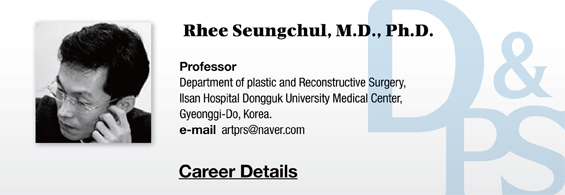
.jpg)
Figure 1. Anatomy of the Lower Face and Photogrammetric Points.
Muscles in this area include the masseter, temporalis, medial pterygoid, lateral pterygoid in the back and the genioglossus, geniohyoid, mylohyoid, digastric in the front. Among these muscles, the masseter muscle is a key target in non-invasive(injectable) correction of wide lower jaws. The masseter muscle originates from the lower 2/3 of the zygomatic bone, deep within the zygomatic arch and attaches to the mandible ramus at the angle.
It carries out the functions of raising the mandible and pushing the chin forward. The masseter muscle can be divided into three parts, the most superficial of which is the largest and most important. This superficial part originates from the front 2/3 of the lower edge of the zygomatic arch to extensively attach to the mandible angle. It carries out the function of pushing the chin forward or upward. This muscle is innervated along the lower 1/3 of the thickness of the muscle.
The temporalis muscle originates from the temporal fossa and attaches to the front of the mandible ramus along the occlusal plane of the coronoid process. The temporalis also pulls the lower jaw upward and, particularly, the posterior part has the unique function of pulling the jaw backward. Headaches that develop after temporomandibular joint anomaly or jaw fracture surgery are often closely related to this muscle.
The key function of the medial pterygoid muscle is to pull the mandible angle upward, forward, and medially. On the other hand, the lateral pterygoid works in opening the mouth and also to push the mandible outward. As discussed above, masticatory muscles include the masseter, temporalis, medial pterygoid, and lateral pterygoid.
To summarize the functions of jaw muscles, the lateral pterygoid pushes the jaw to the front, the digastric, genioglossus, geniohyoid, and mylohyoid pull the jaws in the posterior and inferior directions. The temporalis, masseter, medial and lateral pterygoid pushes the mandible upward and the medial and lateral pterygoid pull the jaws inward. A surgeon carrying out jaw surgeries must understand the importance of the temporomandibular joint(TMJ) in this area.
[Advertisement] PICOCARE - Manufacturer: WONTECH(www.wtlaser.com)
The TMJ is a synovial joint that lies between the condyle and the mandible fossa of the temporal bone. However, this joint is unique in that the joint surfaces are covered in fibrocartilage lacking hyaline. The TMJ consists of articular disc where three ligaments have special movements. In jaw surgery, it is important for the plastic surgeon to have accurate knowledge of the TMJ anatomy and in case of temporomandibular joint internal derangement, and other complications, early discovery is very important.
It is crucial that the surgeons are familiar with Angle’s Occlusion Classification to check the aesthetics of the jaws. This classification method uses the relative positioning of the upper and lower first molars. In normal occlusion, the maxillary fist molar is placed slightly posterior to the mandibular first molar. As shown in <Figure 1>, the mesiobuccal cusp of the maxillary first molar is in a straight line from the buccal groove of the mandibular first molar in normal occlusion.
In Class I malocclusion, the upper and lower molars are lined appropriately but there is malalignment of other teeth. In Class II malocclusion, the maxillary first molar lies anterior to the mandibular first molar, which often creates protruding appearance of the mouth of a chin that is excessively pulled back. Class III malocclusion is characterized by the mandibular first molar positioned anterior to the maxillary first molar. This type of malocclusion results in prognathism.
-To be continued













.jpg)






